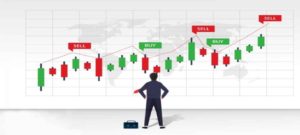There are no set rules for trading, and everyone applies strategies and trading plans that work specifically for them. However, there is one important thing that everyone should keep in mind: it is not how much you gain, it is how much you lose. If a trader creates his own account, takes 100% risk, and loses money in the transaction, then he is not a successful trader. So, today we will look at what is the ideal amount of investment and why.
Long-term investment and savings
Investing and saving is a way to maximize potential returns over time and the amount of investment will depend on the investor’s age, income, determination, and other factors. When it comes to long-term investments, experts offer a variety of statistics. However, many experts estimate that 10-15% of annual income is ideal for long-term savings or investments. That being said, this is an amount that can be saved, but it is certainly not a manageable amount. Unlike investing, trading can be very risky and can lead to losses. Let’s see what is the right investment to trade.
The amount of investment in the business
When it comes to trading, there is probably one of the most important risk management rules. If a trader constantly loses a significant portion of his trading balance, no matter what he says, nothing of his capital will be left immediately. This is just a simple calculation. Trading with 10-15% capital can result in significant losses that are difficult to recover.
According to professional traders, the best and most balanced investment in a contract is 1-3% of the trader’s capital. For example, if your investment is 100, the investment in a balanced risk management strategy contract should not exceed $ 3. But this does not mean that this amount will remain constant as your balance increases. Investment is always a percentage of capital, so investment increases as capital increases.
Another way to implement this run the show is to cancel the contract quickly on the off chance that the sum of misfortune is near to 1-3%. However, if a stop-loss level is not set, it will be more difficult to control, but it is still easier to switch from it, so cautious traders want less investment instead.
Advantages and Disadvantages
Why would experience traders adopt this method? This rule helps the trader to control the number of losses and does not allow him to lose all his capital in one trading session. No dealer can win each time, and contributing as it were a little parcel of the remaining sum could be a great way to oversee misfortunes.
However, this rule may conflict with certain trading methods such as scalping, so traders should think in advance about their trading plan and set their own risk management rules according to the trading style according to the amount of investment.
Keep in mind that even with a small investment, a trader can still incur losses, so it should be combined with other risk management strategies.




